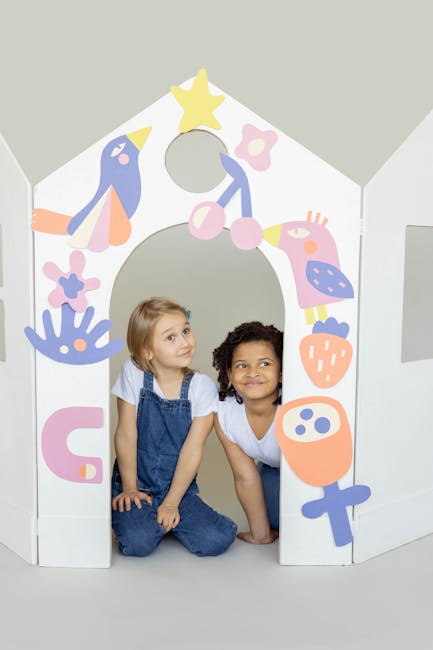
caption
How to Create Your Own Game on Telegram: Step-by-Step Tutorial
Telegram is more than just a messaging app; it’s a powerful platform for creating and sharing content, including games. With over 500 million active users, Telegram offers a unique opportunity for game developers to reach a broad audience. In this comprehensive guide, we will walk you through the steps to create your own game on Telegram. Whether you’re a beginner or an experienced developer, this tutorial will provide valuable insights and actionable tips to help you get started.
Why Create a Game on Telegram?
Before we dive into the steps, let’s explore why you might want to create a game on Telegram. Here are some compelling reasons:
- Wide Reach: With millions of active users, Telegram provides an excellent platform for your game to reach a global audience.
- Engagement: Games can significantly increase user engagement within your Telegram channel or group.
- Monetization: You can monetize your game through in-app purchases, advertisements, or premium features.
- Community Building: Games can help build a strong community around your brand or content.
Step 1: Set Up Your Development Environment
First, you’ll need to set up your development environment. This involves installing the necessary tools and libraries. Here’s a quick checklist:
- Node.js: Install Node.js from the official website.
- Telegram Bot API: Familiarize yourself with the Telegram Bot API.
- Code Editor: Use a code editor like Visual Studio Code or Sublime Text.
Step 2: Create a Telegram Bot
Next, you’ll need to create a Telegram bot that will serve as the interface for your game. Follow these steps:
Step 2.1: Talk to BotFather
Open Telegram and search for BotFather. Start a chat with BotFather and use the command /newbot to create a new bot. You’ll be prompted to choose a name and username for your bot.
Step 2.2: Get Your Bot Token
Once your bot is created, BotFather will provide you with a unique token. Keep this token safe, as you’ll need it to authenticate your bot.
Step 3: Develop Your Game Logic
Now it’s time to write the code for your game. Here are some key points to consider:
Step 3.1: Choose a Game Type
Decide on the type of game you want to create. Popular options include quizzes, puzzles, and interactive stories. For this tutorial, we’ll create a simple quiz game.
Step 3.2: Write the Game Code
Using your preferred programming language (JavaScript is a good choice for beginners), write the code for your game logic. Here’s a basic example in JavaScript:
const TelegramBot = require('node-telegram-bot-api');
const token = 'YOUR_BOT_TOKEN';
const bot = new TelegramBot(token, {polling: true});
bot.onText(/\/start/, (msg) => {
bot.sendMessage(msg.chat.id, "Welcome to the Quiz Game! Type /quiz to start.");
});
bot.onText(/\/quiz/, (msg) => {
const questions = [
{ question: "What's the capital of France?", answer: "Paris" },
{ question: "What's 2 + 2?", answer: "4" }
];
const q = questions[Math.floor(Math.random() * questions.length)];
bot.sendMessage(msg.chat.id, q.question);
bot.onText(/.*/, (msg) => {
if (msg.text === q.answer) {
bot.sendMessage(msg.chat.id, "Correct!");
} else {
bot.sendMessage(msg.chat.id, "Wrong, try again!");
}
});
});
Step 4: Test Your Game
Before launching your game, it’s crucial to test it thoroughly. Create a private Telegram group and add your bot to it. Invite a few friends or colleagues to help you test the game. Look for any bugs or issues and fix them before going live.
Step 5: Launch and Promote Your Game
Once you’re satisfied with the testing, it’s time to launch your game. Here are some tips for a successful launch:
- Announce the Launch: Use your Telegram channel, social media, and other platforms to announce the launch of your game.
- Engage with Users: Encourage users to provide feedback and engage with your game. Regularly update your game to keep it fresh and exciting.
- Monitor Performance: Use analytics tools to monitor the performance of your game and make data-driven improvements.
Conclusion
Creating a game on Telegram is a rewarding experience that can help you engage with your audience in a fun and interactive way. By following this step-by-step tutorial, you’ll be well on your way to developing and launching your own game. Remember, the key to success is continuous improvement and engagement with your users. Happy coding!




 Bengali
Bengali Chinese (Simplified)
Chinese (Simplified) English
English Hindi
Hindi Indonesian
Indonesian Irish
Irish Spanish
Spanish Swedish
Swedish Turkish
Turkish